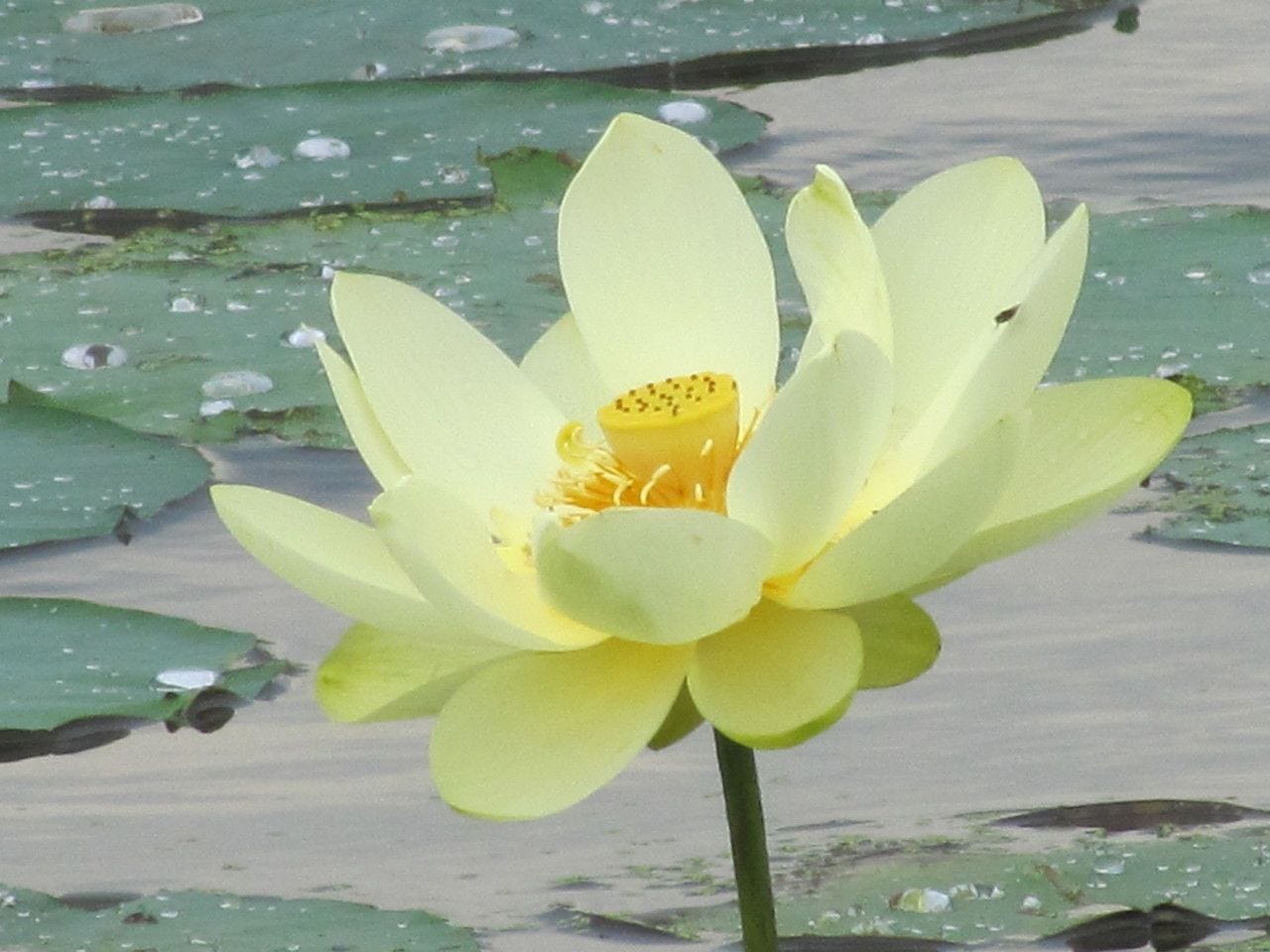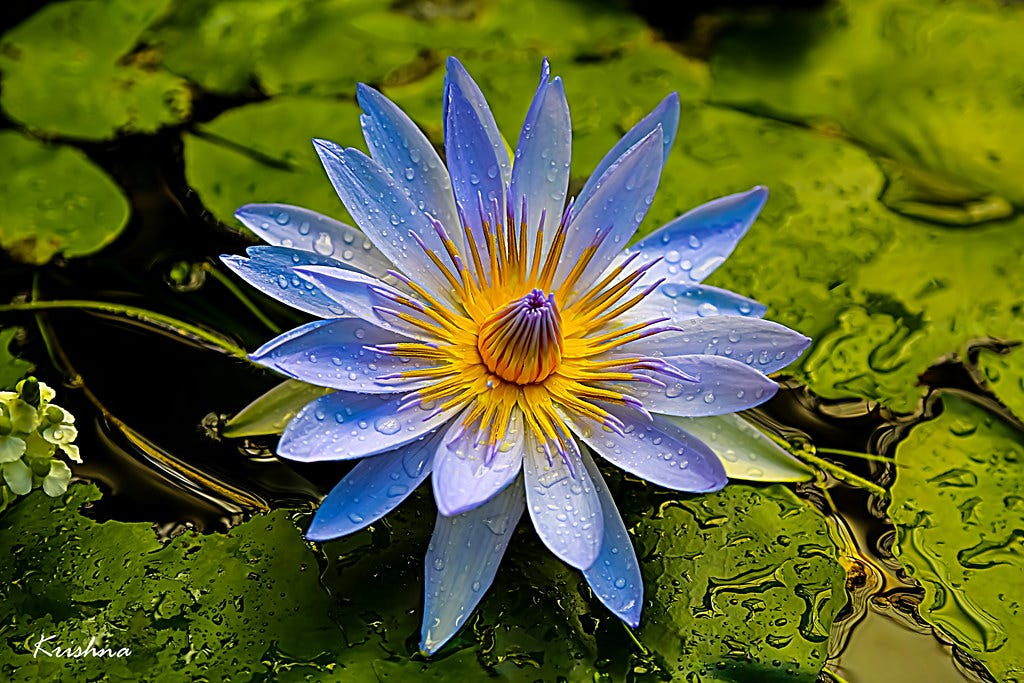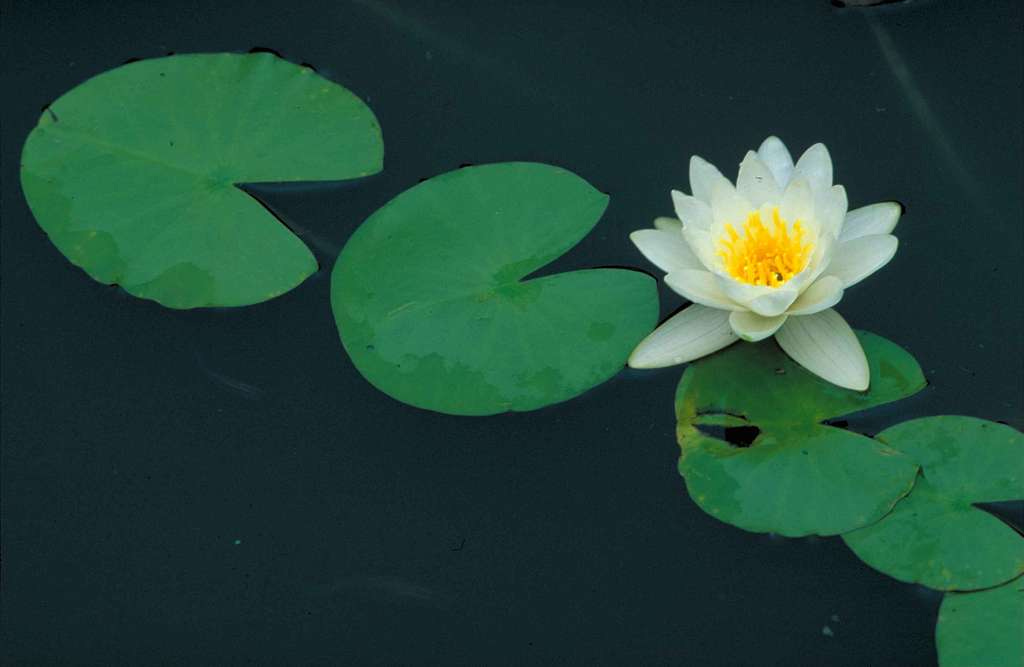ALSO KNOWN AS: Beaver lily, Fragrant water lily, Nympha odorata, water cabbage, alligator blankets, American white water lily
Not yellow lotus, while this plant shares similar coloring and is native to North America as well, lotus flowers are a completely different species than the water lily, they generally extend above the surface of the water rather than floating on top of it.
Or Blue lily (Nymphaea caerulea) these dramatic water lilies
How to know
Nearly perfect circular leaves that float at the top of a pond or slow moving stream
A single white flower
A cluster of bright yellow in the center
In the beginning of the world there probably was an egg, and probably water, and both of them were floating in space. I say this because I saw a sunrise and felt like some great being had thrown its sacred and limited eggs onto this land and it only took moments for the massive yolk to touch every tree and piece of sand with a thick and certain protein.
The fragrant water lily is beautiful, glimmering in a pristine white cup of petals. Salmon sometimes tinges the sides. But usually it looks like a hard boiled egg floating ecstatically on the skin of the water. This is why I bring up the cosmos. It is one of the most common water lilies spanning in glades ponds and lazy streams from Canada, down to Texas and eastward into Maine. There are only about 70 species of water lilies under the Nymphaea family, though they span every continent. They are native everywhere but the very northern or southern reaches of the world.
After three years the fragrant water lily is prepared to create its flower. The yellow center will open only a few times in the water lily’s life and it changes over time. This flower has a temporal separation between its female and male expressions.
Layers and layers of cupshaped petals open out from largest to smallest, until the petal and the stamen merge into the same form in the golden center.
The first bloom is the most important. It opens as a female flower on the first day with a sticky liquid on its center in hopes to coax the pollen-filled insect to it and claim the dust. The following morning, if no insect has brought pollen to the flower, it will bloom again, this time with pollen, and presenting as a male. These male flowers are made up of seventy to one hundred stamens. By comparison, an iris only has one, and in general flowers have between three and six. But the water lily does not have much time to spare. Water lilies are most often pollinated by beetles who copulate on their flowers. Honey and sweat bees are also in the market.
The American water lily puts on a show. They begin by mimicking the morning. They open at dawn with an irresistible scent, and close at noon. They close on cloudy days. It’s not worth the effort. No beetles will visit. After fertilization the stems coil down with the ripe fruit which can contain 2,000 seeds. There, in the water, the fruit is meant to rot, giving the seeds time to mature. Once the fruit is rotted they release the seed into the depths. Despite their picky blooming conditions, the seeds act decisively, growing into rhizomatic nodes and growing quickly. If a knotted rhizome comes loose from the water’s floor, they can easily resprout into a new plant. Some seeds are eaten by wood ducks or scaups, but the ones that survive will be ready to start their ascent again the following spring. As a perennial, the plants die back and become dormant throughout the winter, staying alive in spring fed or slightly moving waters. Fragrant water lilies are an introduced species in the American West and are considered a noxious weed there.
The flower can grow between two and six inches wide, but they make us think of the cosmos. It opens into a holy grail. For thousands of years the water lily has been an inspiration to cultures all over the world. Water lilies are now cultivated for their beauty and ephemerality. From various Buddhist traditions, to Southeast Asia, and in South American tradition these plants represent the lifeforce of the world as they rise from the murk into the daylight, reminding of our own spiritual development, and our continual connection to the divine. They sway on local waters like so many stars floating in our cosmic abyss. When the stem coils the nutlike fruit down, it looks like a serpent, a potent symbol of regeneration and the deep. The water lily also seems to represent a deep love. An Anishnaabe story tells of a star who fell in love with the people, and found that being near them was a way of being close to them. All humans - we can never be too far away from water.
The bright green of the top of the leaf is porous with stomata (like the pores on our skin - or many even our noses: breathing) to allow carbon dioxide and methane gasses in and out. Most stomata on leaves are at the bottom of the leaf so as to reduce the loss of water from the sun. Water loss is not an issue for this plant, as you would imagine.
On its water side of the leaf, there is a deep purple or reddish tinge, like some dark side of the moon. While the top takes in the sun and balances into the surface tension of the water.
The fragrant water lily’s stem cuts the single leaf in a ten inch cleft down the center. The rounded shape, along with the smooth waxy surface of the leaf, keeps it able to float on the surface of the water. All parts of the plant that are submerged have a thin layer of mucus to protect them from abrasion or the mouths of hungry aquatic creatures. The stems have four main channels called lacunae that bring oxygen and carbon dioxide through their body, for nutrition, buoancy, and to keep the plant from rotting. These stems rise between three and six feet through the water toward the sun. If the water is clear, some water lilies are known to rise up to 15’ to reach the surface.
All water lilies are named after the Greek nymphs, the feminine and elemental beings of myth. Perhaps because they are beautiful, or maybe because they’re ephemeral. They are magical: how does a plant actually grow up through the muck and become the water’s shining jewel? Then - they’re gone before you can look again. There. That’s it.
The fragrant water lily is rich in gallic acid, which is present in many plants, including sumac and witch hazel and has been used as an important component of inks and for developing photographs.
The rhizomatic nodes in the thousands of ponds and slow moving streams of North America are the delicacy of muskrats, beavers, and white tail deer. To humans, all parts of this water lily are edible, though they should be boiled several times using different water, to take out toxins and break down the fibers. In addition to food, water lily has been used medicinally to soothe. It is an antiseptic, astringent, and antiseptic. They have been used to treat sore throat, toothaches, or to soothe swelling. Some water lily parts are used as a medicine that, when smoked, creates hallucinogenic effects, though this is not a recommendation, it shows how connected this plant is associated with the unconscious or dream realms.
Myth for Sweet Waterlily
Traveler, are you looking for a path? Have you walked so far the trees have different branches? Have you walked so far the moon hangs from a different peg? Do your feet now curl like snails when you rest them, cramping.
There was a time in your youth when someone you cared about spoke a truth that clung so deeply to your heart you were not able to let go of it. If you search for the grail, look no further. Like the water lily all you must do is wait, and in the blink of a brilliant eye, the waters will open, and coil you down so you can rise back up again, and let the sun pour in.
Forager Friendly?
Yes! Absolutely. All of it. Please be mindful that you are preparing it properly, and that you are not harvesting all of it in a given region. Leave some for the muskrats and bees. But forage ahead!
Sources
https://en.wikipedia.org/wiki/Nymphaea
https://plants.ifas.ufl.edu/plant-directory/nymphaea-odorata/
https://www.wildflower.org/plants/result.php?id_plant=nyod
https://www.youtube.com/watch?v=AgPqHxjY4-o
https://www.farmersalmanac.com/july-flower-lore
https://www.gardenguides.com/115249-water-lily-plant-information.html
https://www.fs.usda.gov/wildflowers/plant-of-the-week/nymphaea_odorata.shtml
https://journals.sagepub.com/doi/full/10.2993/0278-0771-32.1.74







